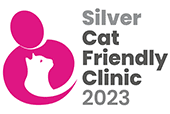RABBITS – Diet and husbandry
Water should always be available.
Avoid muesli based diets – it makes rabbits more likely to become selective feeders and not to obtain the full nutrition needed.
Pellets such as Excel should be fed but should make up no more than 10% of the rabbits total diet.
70% of a rabbit’s diet should be grass and hay – it is important that they chew grass and hay to prevent teeth overgrowth. A variety of hay types can be used as it encourages different chewing patterns and is better for dental health.
The rest of the diet should be made up of green leafy vegetables such as spinach, kale, broccoli, sage, basil, and carrot tops. Carrots and fruits should be fed as treats in small quantities and they contain a large amount of sugar that rabbits can digest very well and lead to obesity. Avoid onions, leek and rhubarb as these are toxic. For a comprehensive list see
https://rabbitwelfare.co.uk/rabbit-diet/
The amount fed should be modified to prevent obesity. An obese rabbit is unable to groom or to eat the soft faeces they have to consume to obtain vital B vitamins. It also leads to a ‘sticky bum’ and makes a rabbit more prone to fly-strike in the summer months. Obesity will make mobility more difficult in the older rabbit that may also have osteoarthritis. For weight clinics, please see one of our nurses.
If your rabbit is becoming a selective feeder, it may be due to overgrowth of the teeth, which can make chewing some foods difficult or even painful. You may notice dribbling down the chin and your rabbit may not be eating the soft faeces (caecotrophs) or passing any faeces as normal. Some rabbits also develop watery/crusty eyes. If concerned, please bring your rabbit in to see one of our dental nurses who can assess the teeth
Exercise is important to prevent obesity. Digestion and gut motility are encouraged by your rabbit moving around and therefore it is important that your rabbit should have access to an area outside of their hutch every day that is large enough for them to run around. For more information, please see





